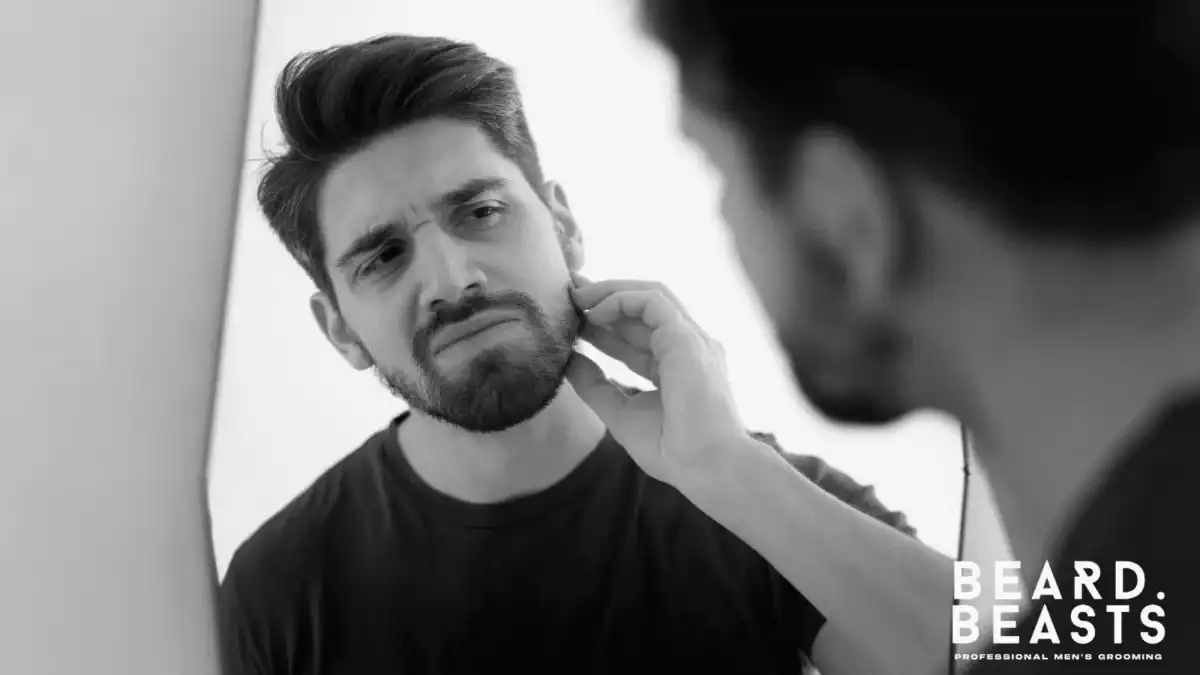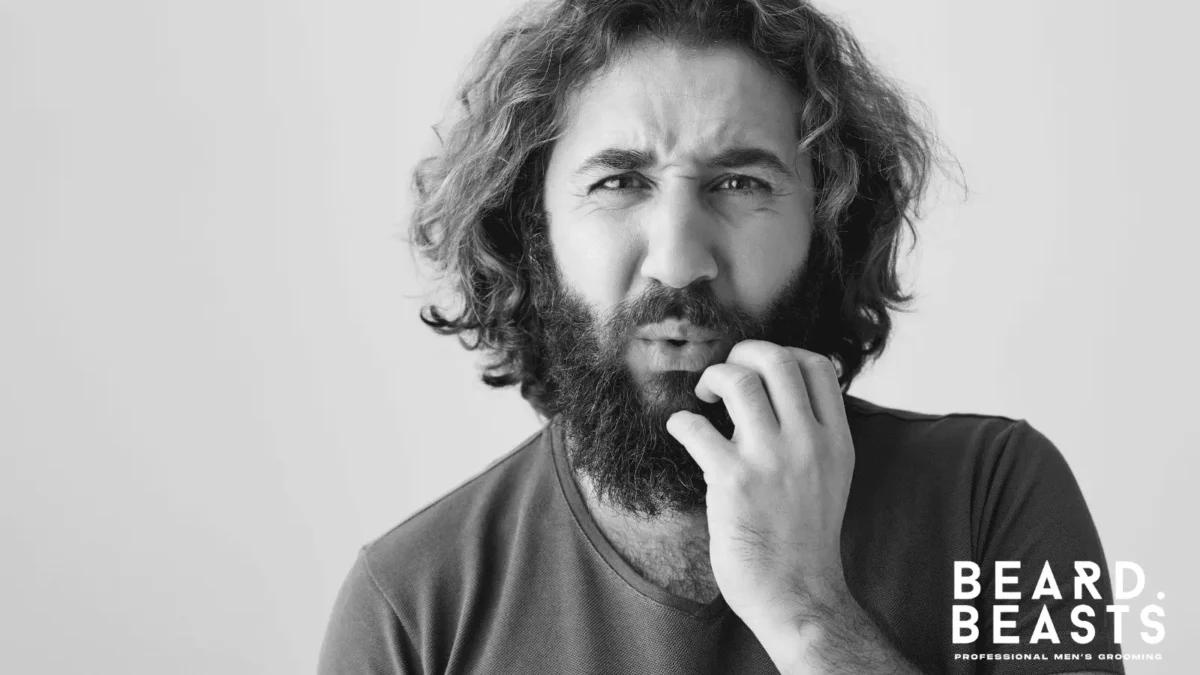When it comes to facial hair, understanding how to train your beard is not just a luxury—it’s essential. A well-trained beard can elevate your look, giving you a polished and refined appearance. But what does beard training entail? It’s more than just a regular trim or a quick comb. Training your beard involves a commitment to grooming that ensures your beard looks great, feels comfortable, and stays healthy. This practice is key to avoiding common beard woes like itchiness, patchiness, and unruly hairs.
What Does “How to Train Your Beard” Mean?
Training your beard is a comprehensive approach to beard care. It involves a series of grooming techniques and routines designed to shape, soften, and maintain your beard. This process starts with understanding your beard’s growth pattern and using the right tools and products. Beard training includes regular washing with suitable beard shampoos, conditioning to keep the hair soft, and applying beard oils or balms to nourish the skin underneath.
An integral part of beard training is learning to effectively comb and brush your beard. This not only detangles and styles your beard but also trains the hairs to grow in your desired direction, leading to a more uniform and manageable beard. Additionally, trimming your beard is crucial for maintaining its shape and removing beard split ends.
Incorporating these practices into your daily routine transforms unruly facial hair into a well-groomed beard. Remember, the key to successful beard training is consistency. Regular grooming, coupled with patience, will result in a beard that not only looks good but also reflects your personal style and enhances your overall appearance.
In the following sections, we will delve deeper into each aspect of how to train your beard, offering practical advice and effective techniques. Whether you’re new to beard grooming or looking to refine your existing routine, these tips will guide you toward achieving a perfectly trained beard. Let’s embark on this grooming journey together, and unlock the full potential of your beard!
Preparation for Beard Training
Before diving into the art of beard training, it’s crucial to equip yourself with the right tools and products. These are not just add-ons; they are fundamental elements that make the journey of “how to train your beard” smoother and more effective.
Beard Comb and Brush: A high-quality beard comb and brush are indispensable. The comb is ideal for detangling and styling, while the brush, preferably with natural bristles, helps distribute oils evenly and keeps your beard neat.
Beard Shampoo and Conditioner: Regular hair shampoo won’t do; you need specialized beard shampoo and conditioner. These products are formulated to clean your beard without stripping away natural oils, keeping your facial hair hydrated and healthy.
Beard Oil and Balm: Sandalwood beard oil is essential for moisturizing both your beard and the skin underneath. Beard balm, on the other hand, provides additional hold and styling capability, ideal for keeping your beard in shape.
Quality Trimmer and Scissors: For precise trimming and shaping, invest in a good beard trimmer and a pair of sharp beard scissors. These tools are crucial for maintaining the length and health of your beard.
Assessing Your Beard Type and Growth Pattern
Understanding your beard type and growth pattern is a key step in your beard training program. Each beard is unique, and recognizing your specific type can help you tailor your grooming routine effectively.
Curly or Straight? Curly beards may require more conditioning and careful combing to prevent tangles, while straight beards might need more frequent trimming to maintain the desired shape.
Thick or Thin? If you have a thick beard, regular trimming and the use of beard balm can help manage the volume. For thinner beards, beard oil can help stimulate growth and give a fuller appearance.
Patchy Areas? If your beard grows unevenly, learning specific trimming techniques can help create a more uniform look. Patience is key here, as some areas may take longer to fill in.
Sensitive Skin? If you have sensitive skin, opt for hypoallergenic or all-natural beard products to avoid irritation.
By choosing the right tools and understanding your beard’s unique characteristics, you lay a solid foundation for effective beard training. Remember, the goal of how to train your beard is not just about following steps; it’s about adapting these steps to what works best for your beard.
With the right preparation, you’re well on your way to achieving a well-groomed, healthy beard that complements your personal style. Stay tuned for our next section, where we will delve into the step-by-step guide to training your beard!
Step-by-Step Guide: How to Train Your Beard
Training your beard is a blend of art and discipline. By following these steps, you’ll be well on your way to mastering the craft of beard grooming.
Step 1: Regular Washing and Conditioning
The first step in how to train your beard begins with cleanliness. Use a nourishing beard shampoo and conditioner 2-3 times a week to keep your beard clean and soft. This routine not only removes dirt and excess oil but also keeps the skin beneath healthy. Remember, over-washing can strip natural oils, so moderation is key.
Step 2: Apply Beard Oil and Brush It
After washing, while your beard is still slightly damp, apply a few drops of Sandalwood beard oil. Work it through your beard with your fingers, ensuring you reach the skin underneath. Beard oil moisturizes and softens your beard, reducing itchy facial hair and promoting healthy growth. Once applied, gently brush your beard with a natural bristle brush. This not only helps evenly distribute the oil but also trains the hairs to grow in your desired direction.
Step 3: Apply Beard Balm and Brush It Again
For additional styling and hold, use a small amount of beard balm. This is especially useful for longer beards that require more control. Warm the balm between your fingers and work it through your beard. Then, brush again to style and shape your beard. The balm helps to tame beard hairs sticking out and gives your beard a neat, cohesive look.
Step 4: Comb It
Use a sandalwood beard comb for more detailed styling and to remove any tangles. Combing helps in training your beard hairs to grow in a particular direction, contributing to a more uniform growth pattern. It’s an essential step for those cultivating a specific beard style.
Step 5: Trim and Shape It
Regular trimming is crucial for a well-maintained beard. Whether you prefer a natural look or a more sculpted style, use a good-quality beard trimmer or scissors to snip away stray hairs and maintain your desired length and shape. Remember to trim when your beard is dry, as hair expands when wet, which can lead to over-trimming.
Step 6: Implement a Healthy Beard Diet
Last but not least, a healthy beard starts from within. A diet rich in vitamins A, B, C, E, and proteins enhances beard growth and health. Foods like eggs, nuts, leafy greens, and lean meats are great for promoting healthy hair. Staying hydrated also plays a vital role in maintaining a healthy beard.
By following these steps, you’ll not only keep your beard looking great but also ensure it’s healthy and well-groomed. Remember, patience and consistency are key in beard training.
Embrace the process, and soon you’ll have a beard that’s not just a facial feature but a statement of your personal style and grooming prowess. Stay tuned for the next section, where we’ll discuss advanced techniques in beard training to take your grooming game to the next level!
Advanced Techniques in Beard Training
As you progress in your beard training journey, it’s time to delve into more advanced techniques. These tips will help you fine-tune your grooming skills, allowing you to customize your routine for various beard styles and tackle common challenges.
Training for Different Beard Styles
Each beard style has its unique grooming needs, and mastering these can elevate your look significantly.
For a Short Beard: Focus on maintaining a clean neckline and cheek lines. Use a trimmer for precision and define the edges regularly. A light beard oil is usually sufficient for this style, keeping it neat without weighing it down.
For a Medium-Length Beard: This length requires more shaping. Use a comb to guide the hairs downwards, and trim any stray hairs for a tidy look. A combination of beard oil and balm can be used to keep the beard soft and styled.
For a Long Beard: A long beard demands more attention. Regular washing and conditioning are crucial to prevent tangles and keep it healthy. Use a brush to evenly distribute oils and balms, and consider using a blow dryer on a low heat setting to help shape your beard.
For a Stylized Beard (like a Balbo or Van Dyke): These beard styles require precise trimming and shaping. Invest in a good pair of scissors and a fine-toothed comb for accuracy. Regular upkeep is key to maintaining the distinct look of these styles.
Addressing Common Beard Training Challenges
Every beard grower faces challenges, but with the right techniques, they can be easily overcome.
Dealing with Itchiness: This is common, especially in the early stages of growth. Keep your skin and beard moisturized with beard oil, and resist the urge to scratch. If itchiness persists, consider using a specially formulated beard wash.
Taming Unruly Hairs: Some hairs refuse to conform. Use a beard balm for extra hold, and brush regularly to train these stubborn hairs. In severe cases, a small amount of hair spray can be used, but sparingly.
Managing Patchiness: Patience is key here. Let your beard grow for a few months before deciding on a style. In the meantime, a shorter beard style might help disguise beard patches.
Styling and Holding Shape: For those wanting more structure, use a beard wax for stronger hold. Experiment with different styles until you find one that suits your beard’s growth pattern and texture.
Advanced beard training is all about personalization and addressing specific needs. By applying these techniques, you can ensure your beard not only looks great but also reflects your unique style. Remember, the journey of how to train your beard is ongoing. Embrace each stage, and don’t be afraid to experiment. In our next section, we’ll explore maintenance tips to keep your beard in top condition. Stay tuned!
Maintenance: Keeping Your Beard Well-Trained
Maintaining a well-trained beard is an ongoing process. By establishing daily routines and long-term strategies, you can ensure that your beard remains a highlight of your personal style.
Daily Routines for Beard Upkeep
Morning Grooming Ritual: Start your day by washing your face and beard with water. If it feels particularly grimy, use a mild beard wash. Post-cleansing, apply a few drops of beard oil to keep it hydrated and manageable throughout the day.
Comb or Brush Regularly: Keep a beard comb or brush handy. A quick comb-through in the morning helps detangle and style your beard, setting the direction of growth and keeping it neat.
Evening Care: In the evening, repeat the oiling process. This is especially important if you live in a dry or cold climate, as these conditions can strip moisture from your beard.
Hydration and Diet: Drink plenty of water and maintain a healthy diet. Hydration and nutrition play a crucial role in keeping your beard (and skin) healthy.
Long-Term Beard Care Strategies
Regular Trimming: Even if you’re growing your beard long, regular trimming is essential. It removes split ends, maintains shape, and encourages healthy growth. A trim every few weeks is typically sufficient.
Deep Conditioning: Once a week, use a beard conditioner or a deep conditioning treatment. This keeps the hair soft and manageable, preventing brittleness and breakage.
Monitor Skin Health: Pay attention to the skin under your beard. Skin issues can affect beard health. If you notice dryness, redness, or itching, consider switching your grooming products or consult a dermatologist.
Adapt Your Routine as Needed: As your beard grows and changes, so should your grooming routine. Be flexible and adapt to the needs of your beard. This might mean switching products or techniques as your beard evolves.
Lifestyle Factors: A healthy lifestyle contributes to a healthy beard. Regular exercise, sufficient sleep, and stress management all play a role in maintaining a strong and vibrant beard.
Remember, the key to a well-maintained beard is consistency. Your beard is a living part of you and responds to the care and attention you give it. By incorporating these daily and long-term care strategies into your routine, you ensure that your beard remains a symbol of pride and grooming excellence. Stay tuned for our final section, where we’ll wrap up our comprehensive guide on how to train your beard!
Frequently Asked Questions About How to Train Your Beard
How often should I wash my beard?
Washing your beard 2-3 times a week with a specialized beard shampoo is ideal. Over-washing can strip natural oils, leading to dryness and irritation. If your beard gets particularly dirty or sweaty, a rinse with water in between washes can help.
Can I use regular hair products on my beard?
It’s best to use products specifically designed for beards. These products are formulated to cater to the unique texture and needs of facial hair and the skin underneath.
How do I deal with an itchy beard?
Itchiness, especially in the early stages of growth, is common. Regular use of beard oil can help soothe the skin and reduce itchiness. Also, ensure you’re not washing your beard too often, as this can dry out your skin.
How can I make my beard grow faster and thicker?
While genetics play a significant role in the growth rate and thickness of your beard, maintaining a healthy diet, exercising, and using beard oils can promote healthier growth. Patience is key, as each person’s growth rate varies.
What’s the best way to trim my beard?
For trimming, use a quality trimmer or scissors. Trim your beard when it’s dry, as hair expands when wet. Comb your beard in the direction of growth before trimming to ensure evenness.
How often should I oil my beard?
Applying beard oil once or twice a day is generally enough to keep it moisturized and healthy. The best time to apply is after a shower when your pores are open and can absorb the oil better.
What should I do about patchy areas?
Give your beard time to grow; often, patches will fill in with time. If the patches persist, consider a beard style that suits your growth pattern or use a beard balm for styling to cover them up.
How important is diet in beard growth?
Diet plays a crucial role in overall health, including beard growth. Foods rich in vitamins A, B, C, E, and proteins support hair health. Hydration is also essential, so drink plenty of water.
By addressing these frequently asked questions, we hope to have provided valuable insights into the world of beard training. Remember, each beard is unique, and what works for one person may not work for another. The key is to understand your beard’s needs and adapt your grooming routine accordingly.
With patience, consistency, and the right care, your journey in how to train your beard will lead to a healthy, well-groomed beard that complements your personal style.

Conclusion: Mastering the Art of Beard Training
As we reach the end of our comprehensive guide on how to train your beard, let’s reflect on the key takeaways and the importance of patience and consistency in this grooming journey.
Summarizing Key Takeaways
- Understand Your Beard: Recognizing your beard type and growth pattern is crucial. Tailor your grooming routine to suit your beard’s specific needs.
- Invest in the Right Tools: High-quality combs, brushes, trimmers, and grooming products make a significant difference in your beard training experience.
- Regular Maintenance: Regular washing, conditioning, oiling, and trimming are vital. These steps keep your beard healthy and well-groomed.
- Styling and Training: Use beard oils and balms to style your beard and train it to grow in the desired direction. A consistent combing and brushing routine is key.
- Diet and Lifestyle: A balanced diet and a healthy lifestyle contribute significantly to the health of your beard. Remember, a great beard starts from within.
Encouraging Consistency and Patience
Mastering the art of beard training doesn’t happen overnight. It requires dedication, patience, and regular upkeep. Your beard is a reflection of your personal care and attention, so embrace each stage of its growth. Consistency in your grooming routine will yield the best results over time. Don’t get discouraged by initial challenges like itchiness or patchiness – these are common and can be managed with the right approach.
Remember, your beard is a dynamic part of your appearance. It can change and evolve, just like your style. So, keep experimenting and adjusting your routine as needed. Whether you’re aiming for a rugged, natural look or a sleek, well-shaped style, the principles of beard training remain the same.
In summary, how to train your beard is more than just a set of grooming steps – it’s about embracing a lifestyle that brings out the best in your beard. With the insights and tips provided in this guide, you’re now equipped to embark on this rewarding journey. Happy grooming, and may your beard be a source of pride and joy in your personal style!





